By Mac Demere, automedia.com
Driving on ultra-high-performance tires on a snow-covered road is like trying to negotiate Copper Mountain's expert-level "Drain Pipe" ski run on water skis. Both are skis, so what's the problem? Even on tires billed as "ultra-high-performance all-season" driving in the snow is like negotiating that black-diamond run on cross-country skis: It's possible, but it's not the best choice. Also known as "max performance summer" tires or, more accurately, "three-season" tires, they come standard on every Porsche (except the Cayenne), all Corvettes, the Viper, all Ferraris and more.
The reason: Summer tires offer more grip on both wet and dry roads than all-season tires, much less winter (aka "snow") tires. The only exception: when the thermometer drops below freezing or snow covers the pavement.
Tire performance differences
Winter tires, all-season-tires and summer tires differ in the pliability and durability of their rubber at different temperatures. Tire engineers call it "glass transition temperature": Get them cold enough and every tire will have the grip of a Formica kitchen counter. For a race tire, it might be 40 Fahrenheit. For a winter tire it could be 60 degrees below zero. Summer tire tread starts becoming Formica-like somewhere just below freezing. Most all-season tires are still pliable below zero, but some "ultra-high-performance all-season" tires start losing grip well before that.
Grip and sipes
Tire grip in the cold is much like oil viscosity, largely because tires contain many petroleum-based products. A 50-weight racing oil will protect an engine at temperatures approaching 260 degrees, but at 70 degrees it's almost as thick as gelatin.
Today, most racing oils are "multigrade": A 20W-50 racing oil remains liquid enough to adequately lubricate the engine while it warms up but still protects at prodigious temperatures. Tires haven't advanced that far.
There are many other things that give tires grip in the snow.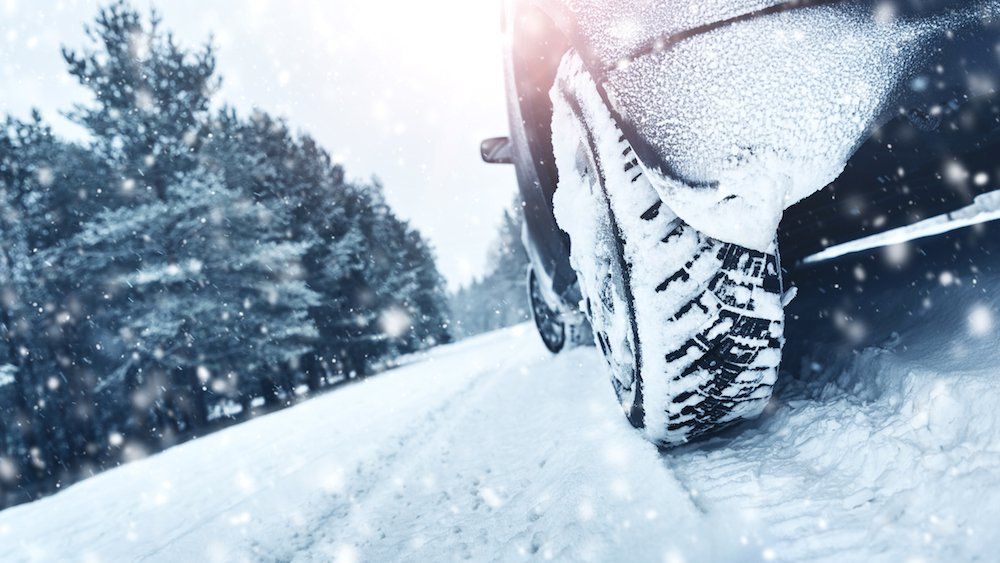 "Sipes" small slices in the tread are among the top features. But you can't put enough sipes in a summer tire to give it useful mobility in the snow.
"Sipes" small slices in the tread are among the top features. But you can't put enough sipes in a summer tire to give it useful mobility in the snow.
I have personally experienced summer tires in the snow many times. Once, I got stuck on a perfectly level-packed snowfield. Another time, an ultra-high-performance summer tire would not go forward if the snowy road had any incline, but in reverse it could maintain about 5 mph. A third was the safest snow tire in the world: It couldn't get out of the garage.
Most recently, I drove for a video that was designed to sing the praises of a new ultra-high-performance all-season tire. We were using a snow-covered track. Air temperature hovered in the low 20s. The client supplied a BMW 3 Series, but that wasn't flashy enough for the ad agency. So, they hitched a trailer to a bright yellow Dodge Charger SRT-8 Super Bee fitted with 20-inch tires from a different tire company.
I said, "Uh, those are (Brand X, Model Y)." When they looked at me as if I was wearing an aluminum foil hat to keep the CIA from reading my thoughts, I elaborated: "They're summer tires. "
"
Attempting to placate this wacko driver they replied, "Oh, you won't be able to tell the brand in the video."
"Absolutely right," I said, "because the car won't move with them on it." I attempted to explain the differences between winter, summer and all-season tires, but their California eyes quickly glazed over.
The ad guys' next bright idea was to have me borrow some all-season tires from Dodge, which was testing at the same facility. I drove the Charger over to their garage and almost crashed about 25 times in the quarter mile trip. I never exceeded 15 mph: I didn't want to go that fast, but with the brake pedal buried to the floor it picked up speed on a slight downgrade. I've run 210 mph in an Indy Car at Texas Motor Speedway, but I scared myself more times on that short trip.
Dodge graciously offered to loan us some 20-inch high-performance all-season tires. But over the two-way radio came their test driver's fourth request that day to be pulled out of a snowbank. His car was fitted with the tires we would be borrowing. I said, "No thanks." The Charger went back on the trailer.
His car was fitted with the tires we would be borrowing. I said, "No thanks." The Charger went back on the trailer.
Here's the bottom line: If you have a high-performance car on summer tires, don't drive it in the snow or when it's much below freezing. Don't count on ultra-high-performance all-season tires to provide anything more than limited mobility in snow, but you can be assured of less wet and dry grip. And a BMW 335 on first-class snow tires is a blast on a snow-covered track.
The seasons are changing, and winter is on the horizon. It's getting cold, and perhaps there's a bit of snow or ice on the road. You know you should, but changing the tires on your car can be a hassle. You're wondering whether you can leave the summer tires on your vehicle. The short answer is no. Using summer tires in winter conditions might be dangerous and risks damaging your tires.
Local weather conditions are a huge deciding factor for the choice of your tires. With only occasional bouts of freezing temperatures, all-season tires could be an option for mild winter conditions.
With only occasional bouts of freezing temperatures, all-season tires could be an option for mild winter conditions.
We recommend against using summer tires if there’s any snow, it’s icy, or the temperature is frequently freezing. Winter is the time to fit your car with winter or at least all-season tires.
Summer tires have lower rolling resistance than winter tires; this improves efficiency and handling while also reducing noise levels. The tread on these performance tires, however, performs poorly on ice and snow.
In winter weather, summer tires have poor acceleration. Winter tires or snow tires will outperform them on snowy roads. Furthermore, summer tires have low rolling resistance, resulting in long brake distances on ice or snow. A winter tire has deep tread, with sipes that dig into snow and grip onto ice, providing shorter braking times. By contrast, the compound of winter tires is much softer and less vulnerable to cold temperatures.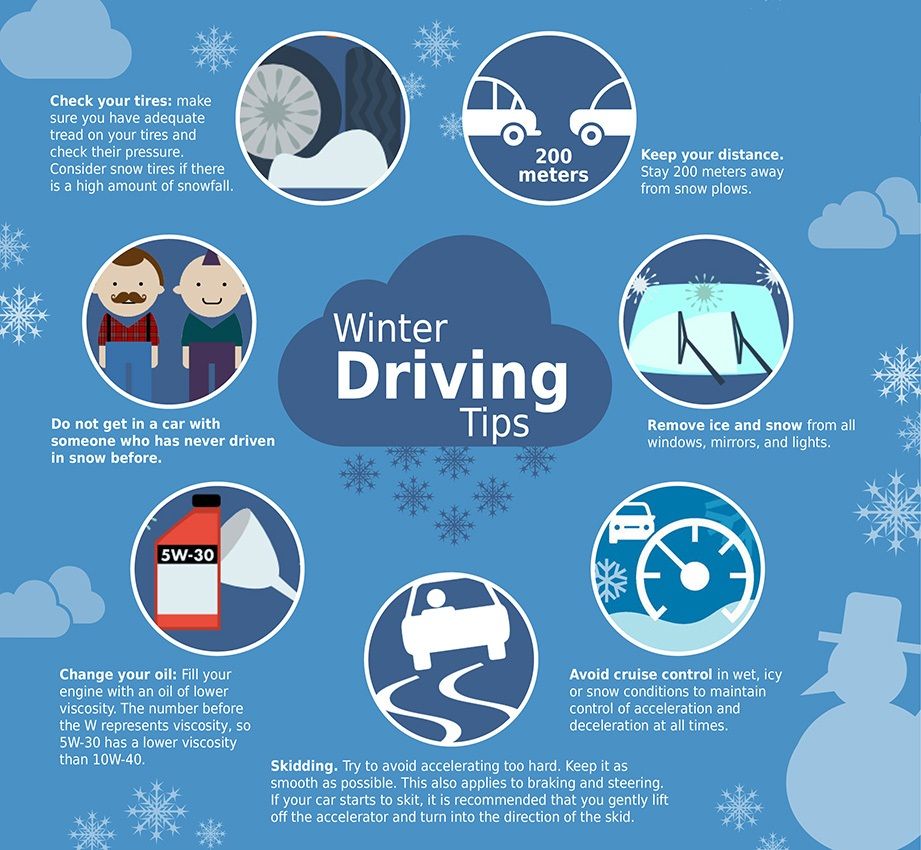
The rubber compound on summer tires is designed for warm weather. As the temperature drops, the rubber stiffens. Even if there is no snow or ice, the tire loses traction.
All-season tires by Continental, on the other hand, are equipped with tread and sipes similar to winter tires, so they are able to withstand mild wintry conditions. However, always remember that winter tires are specifically tailored to the relevant conditions.
Even on dry roads without ice and snow, winter brings colder temperatures. Summer tires are not built for cold weather. The tire tread will stiffen. In addition to reducing traction, this poses a risk to the tire itself.
The tire loses its elasticity and may crack. There's a risk of chipping of the overly stiff thread block. Chipped and cracked tires are not safe to drive on and must be replaced.
Although all-season tires are not suitable for extreme winter conditions, they can be a good choice for drivers, living in mild winter conditions. The all-season tire offers good handling and features good braking performance on dry and wet surfaces. In addition, drivers can save money and time, and reduce the effort required for seasonal tire changes.
The all-season tire offers good handling and features good braking performance on dry and wet surfaces. In addition, drivers can save money and time, and reduce the effort required for seasonal tire changes.
If you are unsure about the right tire choice, please contact your local dealer for personal advice.
The fastest way to the perfect tire.
Select tiresize or Show results
The editors of the AvtoVzglyad portal do not call for experimenting when driving on the road in winter in a car shod in summer tires. But, you see, the circumstances are different. How to behave while driving if you suddenly had to find yourself in a similar situation?
Vyacheslav Vasilenko
Of course, driving a car with out-of-season tires is a lifelong lottery. The probability of becoming the culprit of an accident, driving an "iron horse" in winter on summer tires, increases significantly. No wonder, because such tires are simply not adapted to low temperatures and the rubber compound loses tenacity when the thermometer mark approaches zero. Moreover, hardening, it ceases to be elastic, which negatively affects any maneuvers. And the point here is not even that there is snow, water porridge or ice on the road - the car may refuse to obey the driver even on asphalt, starting from useless steering exercises and ending with an “idle” pressing the brake. Therefore, it is not worth it to be like a neighbor who is sure that marketers came up with winter tires in order to make money on it, and it is still better to change the car at the first opportunity.
The probability of becoming the culprit of an accident, driving an "iron horse" in winter on summer tires, increases significantly. No wonder, because such tires are simply not adapted to low temperatures and the rubber compound loses tenacity when the thermometer mark approaches zero. Moreover, hardening, it ceases to be elastic, which negatively affects any maneuvers. And the point here is not even that there is snow, water porridge or ice on the road - the car may refuse to obey the driver even on asphalt, starting from useless steering exercises and ending with an “idle” pressing the brake. Therefore, it is not worth it to be like a neighbor who is sure that marketers came up with winter tires in order to make money on it, and it is still better to change the car at the first opportunity.
What to do in unforeseen cases, if bad weather played a cruel joke even before you changed the wheels? The "skating rinks" stuck to the icy surface, but for the life of me, you have to go! Call a taxi, a tow truck or contact a kamikaze neighbor? Not necessarily: you can get to your destination on your own, only this will require some skills.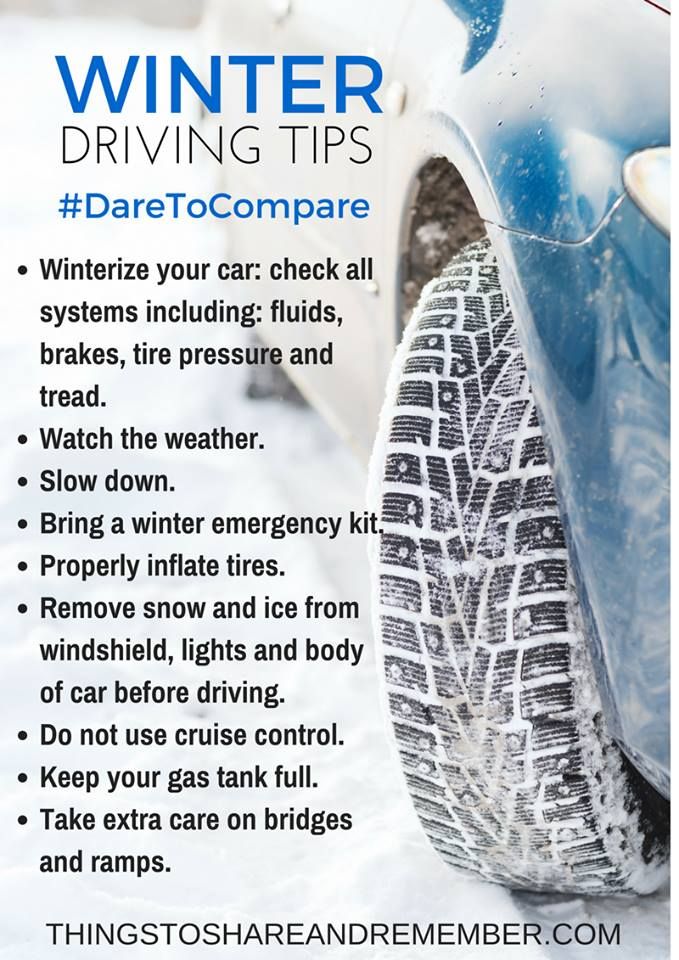 First of all, you need to move at low speed and significantly increased than usual, the distance to the vehicle in front. At the same time, the engine speed should be kept slightly above average, and the steering wheel should work smoothly and without sharp frills. Also smoothly and gas it up so that the car does not twitch, striving to break off the path. To brake, anticipating the situation on the roadway (and you need to monitor the situation with increased attention), it is necessary to cyclically press the pedal. Even with ABS, you should not press the brake all the way and hold it, trying in vain to catch the car in an uncontrolled slip. Oh, and don't forget to turn on the emergency lights.
First of all, you need to move at low speed and significantly increased than usual, the distance to the vehicle in front. At the same time, the engine speed should be kept slightly above average, and the steering wheel should work smoothly and without sharp frills. Also smoothly and gas it up so that the car does not twitch, striving to break off the path. To brake, anticipating the situation on the roadway (and you need to monitor the situation with increased attention), it is necessary to cyclically press the pedal. Even with ABS, you should not press the brake all the way and hold it, trying in vain to catch the car in an uncontrolled slip. Oh, and don't forget to turn on the emergency lights.
Even better, when decelerating, brake the engine by shifting to a lower gear. "Mechanics", of course, in this case is an ideal option, but it is possible to stop without accident or go through an arc on the automatic gearbox. True, not all modern cars have automatic transmissions with manual modes, so you will have to slow down under a gentle release of gas.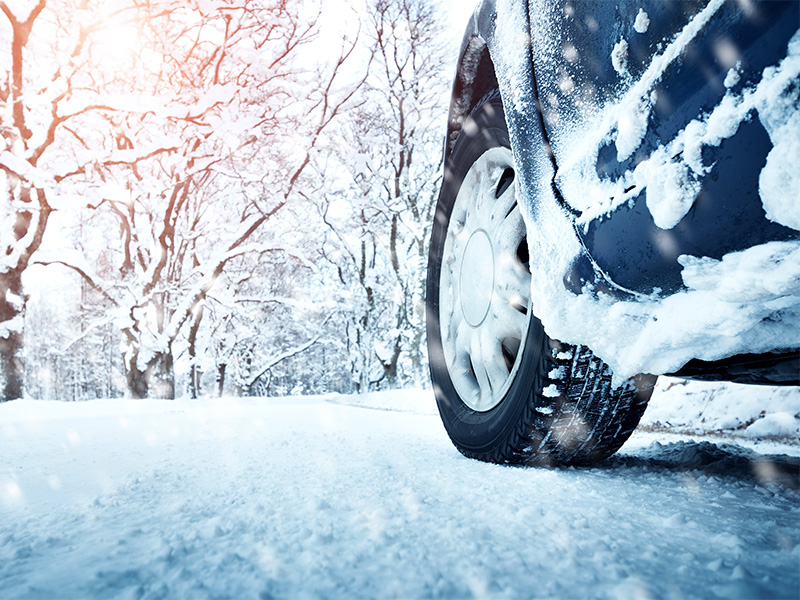 But we must not forget about the supply of engine thrust, which you must dose, not allowing the speed to fall, so that it is enough for safe maneuvering.
But we must not forget about the supply of engine thrust, which you must dose, not allowing the speed to fall, so that it is enough for safe maneuvering.
If the stern is thrown into a skid while driving a front-wheel drive machine, do not apply the brakes under any circumstances. Thus, you will provoke the car to uncontrolled behavior. To keep it in the trajectory, you need to act on the contrary - put pressure on the gas and turn the steering wheel in the direction of skidding. Just be careful not to overdo it. After twisting, there is a risk of skidding in the opposite direction. But if everything is done smoothly and without panic, the front axle itself will pull the rear axle out of the side slope. With rear-wheel drive, the situation is a little more complicated. To level a car that has floated in a rotary slide, you need to do almost the same thing as on the front drivers. The only exception is the absence of the need to press the gas - just take your foot off the pedal and continue to unscrew the steering wheel in the direction of skidding.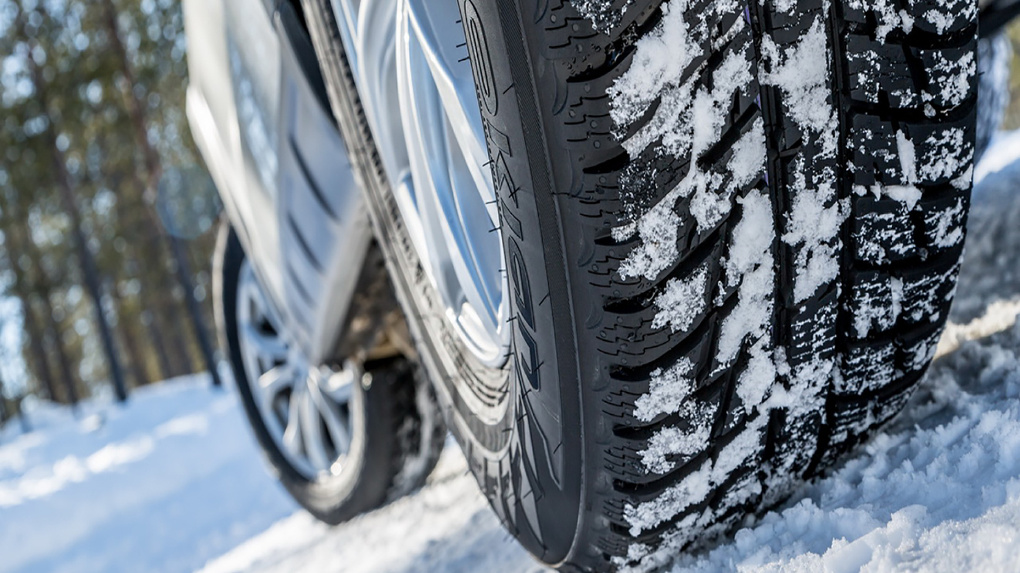 When pressing the "trigger", you, on the contrary, deprive the rear wheels of the braking effect and you will no longer have to count on the stabilization of the course. It is impossible to brake hysterically, as in the case of a front-wheel drive car, categorically - a complete loss of control over a vehicle that has started to float freely on the road is guaranteed.
When pressing the "trigger", you, on the contrary, deprive the rear wheels of the braking effect and you will no longer have to count on the stabilization of the course. It is impossible to brake hysterically, as in the case of a front-wheel drive car, categorically - a complete loss of control over a vehicle that has started to float freely on the road is guaranteed.
As for all drives, the fundamental factor here is the axle to which the greatest torque is transmitted. If this is the front, then we act according to the first principle, working with the steering wheel and gas, adjusting the degree of depression until it is completely withdrawn from the turn; if the back one - according to the second, dropping the gas, but dosing efforts when leveling the trajectory.
How to climb a slope covered with snow and ice? Tires can be slightly flattened. Less pressure, although not by much, will improve traction. It is not for nothing that drifters and other racers participating in competitions on soft ground resort to bleeding air from tires.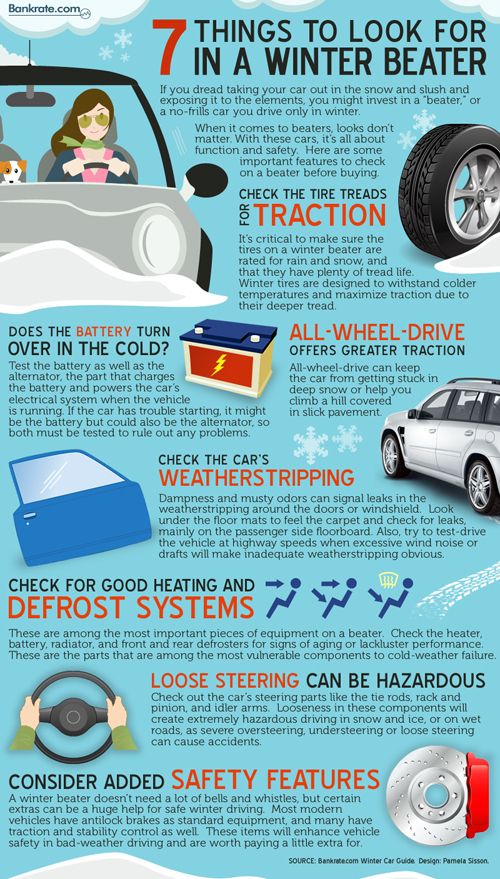 It is also possible to drag the car uphill, pushing it with the drive wheels. True, a front-wheel drive car will have to be deployed and climb uphill in reverse. It is clear that on a busy highway such an option may not work. Then you need to figure out what to put under the wheels in order to avoid slipping.
It is also possible to drag the car uphill, pushing it with the drive wheels. True, a front-wheel drive car will have to be deployed and climb uphill in reverse. It is clear that on a busy highway such an option may not work. Then you need to figure out what to put under the wheels in order to avoid slipping.
But it is best to do not hesitate to go to tires ...
172642
What functions should have “Anti -Radars” depending on the price and needs of the driver
,0008 43948 9000 9000What sets of functions should “radar detectors” have depending on the price and needs of the driver
43948
Subscribe to the Avtovzglyad channel:
SDA, traffic safety, summer tires, accident, traffic accident, winter tires Life hacks
The question of whether it is possible to drive on summer tires in winter does not leave the newly minted carriers alone.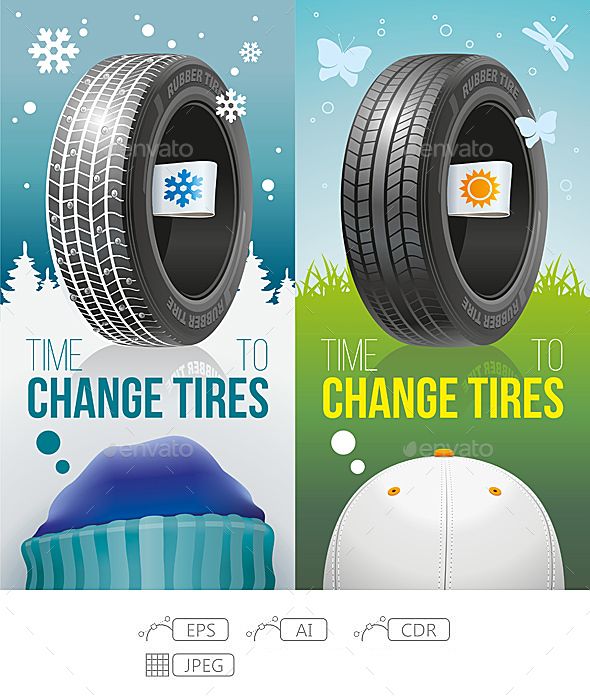 However, experienced motorists often turn to this problem. Buying winter “shoes” hurts the wallet, so it is logical that people are trying to save money. But how justified are such savings? How do summer tires perform in winter?
However, experienced motorists often turn to this problem. Buying winter “shoes” hurts the wallet, so it is logical that people are trying to save money. But how justified are such savings? How do summer tires perform in winter?
Contents
If in Soviet times car owners did not have much choice and they had to drive on the same tires all year round, today you can find tires for any operating conditions in stores.
The rubber composition of winter tires is very different from that of summer tires. Summer tires are not designed for use in low temperatures. If you ask the experts whether it is possible to drive in winter on summer tires, they will immediately say that in no case should you. There are several reasons for this:
 Already at the first frost, summer tires "tan". They no longer provide the necessary grip on the roadway, especially if the roads are icy. The braking distance tends to infinity. Result: skidding, flying into a ditch, accident.
Already at the first frost, summer tires "tan". They no longer provide the necessary grip on the roadway, especially if the roads are icy. The braking distance tends to infinity. Result: skidding, flying into a ditch, accident. If you still don't understand why you shouldn't drive with summer tires in winter, do a little experiment: put an ordinary school eraser in the freezer, and after 15–20 minutes, take it out and try to bend it. It will lose elasticity, begin to crumble and break. Roughly the same thing happens to your summer tires when you ride them in the winter.
It will lose elasticity, begin to crumble and break. Roughly the same thing happens to your summer tires when you ride them in the winter.
As you can see, if you drive with summer tires in winter, you are unlikely to save money. In the best case, you will completely ruin the summer tires, in the worst case, you will break the car. Close to disaster.
Don't skimp on your own safety! If there is no money for a new set of tires, you can always buy used tires. It will cost you 2-3 times cheaper, but will last another 2-4 seasons.
We sorted out the question of whether it is possible to drive in winter on summer tires. Of course, you shouldn't do that. But what if you urgently need to go, but there are no winter tires? You will say that this does not happen, but situations are different. For example, you live in a remote village and only use your car in the summer. But suddenly, in the middle of winter, you needed to take your father to the hospital.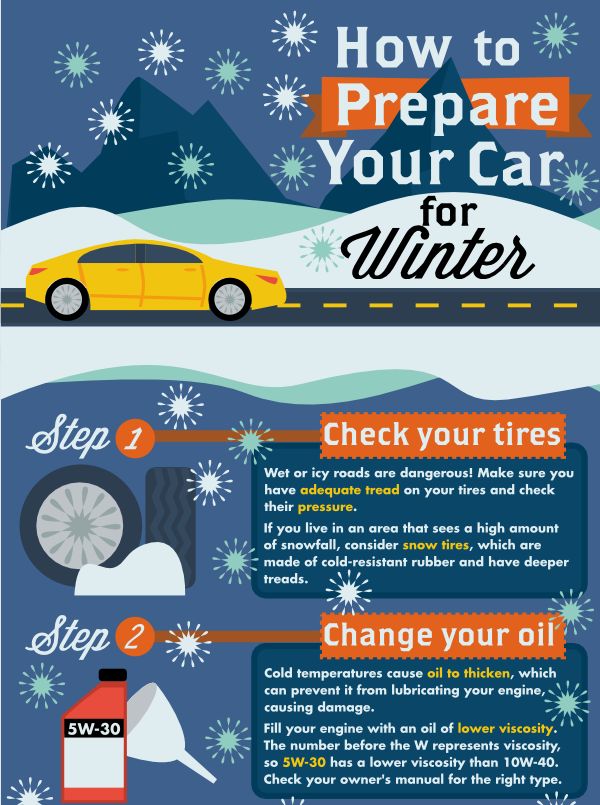 Or a banal story: you were just about to buy new tires at the weekend, and then frosts suddenly appeared.
Or a banal story: you were just about to buy new tires at the weekend, and then frosts suddenly appeared.
So, you intend to drive with summer tires in sub-zero weather.
If possible, find chains for the wheels. This will make your journey less dangerous. Yes, you will have to ride to the sound of metal, but you will have normal traction.
Of course, you can ride on summer tires in winter. After all, although the law requires the installation of winter tires in December-February, it does not provide for any fine for violating this rule.